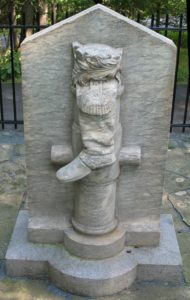When historical monuments are removed, what becomes of them? If resources are available, such as time, funding, and physical space, historical monuments should be placed in a space where the circumstances surrounding both their origin and subsequent removal can be displayed and explained for whatever audience wishes to know that history. The monuments should be utilized as sources of information, not as objects for reverence. The monuments should not serve a narrative that is ahistorical at best, propagandizing at worst. The recent removal of New Orleans’ monuments to the Confederacy is an example of the effort to reckon with symbols of the past that reside in the present. The New Orleans city council voted 6-1 to remove the city’s four monuments, statues of P.G.T. Beauregard, Jefferson Davis, and Robert E. Lee, as well as an obelisk dedicated to the Battle of Liberty Place. The monuments are currently being housed in warehouses until their new location is decided, with plans to relocate them to an appropriate space such as a cemetery or museum.
It is worth considering the manner in which other infamous persons from our nation’s history are remembered.
The Saratoga National Historic Park in Stillwater, New York provides a poignant example of how a person who was an accomplished military general but also a traitor should be memorialized. Benedict Arnold, general of the Continental Army and one of the most notorious traitors in history, is not mentioned by name or even represented by a personification. The monument, pictured here, honors the leg of Arnold that he broke during battle. Similarly, a memorial plaque dedicated to Arnold at the United States Military Academy simply reads “Major General. Born 1740.” These monuments were carefully constructed to honor Arnold’s military achievements without glorifying his treason. This same care could be applied when contextualizing monuments to the Confederacy in order to omit the ahistorical narrative of the Lost Cause and to stop the glorification of the men who fought to keep an entire race enslaved.
